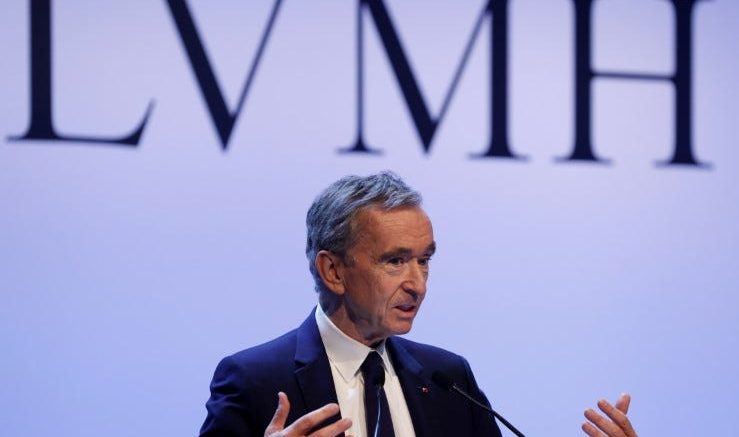By Julia Corrie
“I would rather weep in a Rolls-Royce than be happy on a bicycle.”
Patrizia Reggiani, the infamous ex-wife of Maurizio Gucci, was known for her expensive lifestyle and social status while a part of the Gucci family.
Upon the release of The House of Gucci on Nov. 24, History vs. Hollywood released an article detailing the plot of the film and how it compared to the historical truth.
When Rodolpho Gucci, Maurizio’s father, died in 1983, his brother Aldo battled with his nephew over the future of the company — keeping business traditional and in the family versus making deals with outside investors in order to increase revenue.
The Gucci family lost ownership of the company following the legal battle between Bernard Arnault’s Moët Hennessy Louis Vuitton (LVMH) and François Pinault’s Pinault Printemps Redoute (now Kering) in the 1990s.
LVMH and Kering are two of the most successful luxury groups in the world. Their most notorious acquirements include Fendi, Givenchy, Bulgari, Gucci, and Puma to name a few.
Luxury groups are comparable to an umbrella with exorbitant clothing, cosmetics, accessories, home goods, and alcohol labels all protected underneath.
Like Gucci, many European namesake luxury brands such as Bulgari and Givenchy started with an immediate family and the manufacturing of high-quality goods. Between the 1990s and the early 2000s, LVMH made major investments to acquire 15 luxury fashion houses and cosmetic brands.
In the timeline linked above, almost every single brand states that it started as a family business venture, up until LVMH acquired it or purchased the majority of its stakes.
Louis Vuitton is the most famous example of the family business model, beginning with Vuitton himself in 1854.
Vuitton originally made his name by manufacturing sturdy, stackable leather trunks. The brand took on incredible domestic success in France, and only continued to spread after Vuitton’s death in 1892.
Louis’s son Georges and his grandson Gaston both followed in his footsteps, traveling around the world and creating worldwide buzz over the luggage. Gaston was the final male heir to the label’s ownership after George’s death in 1936.
Gaston’s daughter, Odile, eventually married a wealthy businessman in the steel industry named Henri Racamier, asking him to take control in 1977. From there, luxury fashion houses and goods manufacturers around the world gained exponential success.
Bernard Arnault, a french investor, had the idea to create a “luxury group” in the 1980s. Working alongside Alain Chevalier and Henri Racamier, the CEO of Moët Hennessy and then-president of Louis Vuitton, they formed LVMH.
As of 2021, over 75 luxury brands around the world have either been acquired by LVMH or have had a majority of their shares purchased by the conglomerate.
The inception of luxury groups into society was arguably one of the best business ventures one could’ve made. Especially in European countries where, in comparison to the United States, higher quality goods have a larger market.
Fendi, one of the most iconic italian fashion houses of all time, is an example of a label that was acquired by LVMH, while also reamining in the family. It was launched in 1926 by Adele and Edoardo Fendi, as a fur and leather bags brand. In 1946, their five daughters each took over 20% of the company’s ownership.
The label stayed under the total ownership of the Fendi family until 1999 when Prada and LVMH joined to buy 51% of its shares. Following this deal, Bernard Arnault and Patrizio Bertelli, the then-chairman of Prada and now CEO, took the reigns of leadership.
The difference between Fendi and other European fashion houses is there has always been a Fendi family member in a management position for the brand.
Bertelli married Miuccia Prada in 1978, after already developing a strong business relationship in the leather goods industry. He was running a leather factory, and at the time, Miuccia needed someone to manufacture her bags.
Miuccia had been working in the accessories department of the label since joining the family business in the mid-70s. As a fashion designer, she was able to launch her first successful handbag design in 1985. From there, she founded the subsidiary brand“Miu Miu,” modeled after her own wardrobe and long-time nickname.
Anna Gross of the Financial Times said “consolidation is central to success [of the luxury sector].” This was obviously true with the raging success of luxury umbrellas such as Kering and LVMH, which took in a total of ~57.7 billion euros in 2020, which was a slower year due to the COVID-19 pandemic.
What’s interesting about the luxury industry is that each brand became more successful following the integration with conglomerates, ultimately making them more money. Less of the industry is dependent on customer sales, but more stakes and interest growth than anything else.
If a brand was to stay under the original family’s ownership, it would arguably not have as much of an opportunity for growth, whether that be financial or physical expansion around the world. Financial investors and international businesspeople are the ones that took all of these labels to new heights in the fashion world, and there is no sign of slowing down anytime soon.



Be the first to comment on "A Glimpse into Greed: Luxury Conglomerate Growth and Staying in the Family"